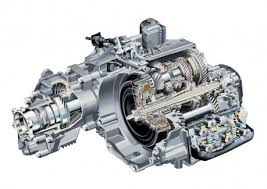Mobile:+86-311-808-126-83
Email:info@ydcastings.com
English
casting supplies
The Essential Guide to Casting Supplies
Casting is a fascinating process that has been used for centuries to create everything from intricate jewelry to large sculptures and functional metal parts. Whether you're an experienced artisan or a newcomer to the craft, having the right casting supplies is essential to achieving quality results. This article will provide an overview of the necessary tools and materials for successful casting projects.
Types of Casting Processes
Before diving into the supplies, it’s important to understand the different types of casting processes you might engage in, each requiring specific tools and materials.
1. Sand Casting This is one of the oldest and most common methods, where a sand mold is created around a pattern. After the mold is formed, molten metal is poured into the cavity. Typical supplies include sand, clay, a pattern (usually made from wood or metal), and a furnace.
2. Investment Casting Also known as lost-wax casting, this technique involves creating a wax model that is coated in a ceramic shell. Once the shell hardens, the wax is melted away, leaving a cavity for the molten metal. Essential supplies include wax, ceramic materials, and a kiln.
3. Die Casting This method uses two hardened steel molds, into which molten metal is injected at high pressure. This technique is often used for mass production. Supplies needed include casting dies, a die-casting machine, and molten metal.
4. Permanent Mold Casting Similar to die casting but typically involves less pressure and can be reused multiple times. The processes, materials, and equipment required here are similar to die casting, yet simpler.
Essential Casting Supplies
Regardless of the casting method chosen, several fundamental supplies will be required
casting supplies

1. Molds Molds can be reusable or one-time use, depending on the casting method. For example, in sand casting, you’ll need a two-part mold, while investment casting requires a disposable shell mold.
2. Melting Equipment To create cast pieces, you will need a furnace or a kiln capable of reaching the necessary temperatures for the materials you intend to cast. For metals like aluminum, propane or electric furnaces work well.
3. Molten Material The choice of material largely depends on your project requirements. Metals like aluminum, bronze, and iron are popular for metal casting, while resins and plastics might be used for less demanding applications.
4. Pattern Materials Creating a pattern for your mold can be done using a variety of materials, including wood, metal, or even 3D-printed plastic. The choice will depend on the desired finish and complexity of the pattern.
5. Release Agents To ensure that your castings do not stick to the molds, a release agent is essential. Common options include petroleum jelly, vegetable oil, or specialized commercial releases.
6. Finishing Tools After a casting is complete, additional tools may be necessary for finishing, such as sanders, grinders, and polishing tools, especially for aesthetic pieces like jewelry.
7. Safety Gear Safety should always be a priority in casting. Equip yourself with heat-resistant gloves, goggles, and protective clothing. Proper ventilation is also critical if you are working with potentially harmful fumes or dust.
Conclusion
Casting can be an incredibly rewarding craft, allowing artisans to bring their creative visions to life. However, to achieve the best results, having the right supplies is paramount. Choose the appropriate casting method and ensure that you gather all essential materials, from molds to melting furnaces. Additionally, always prioritize safety. With the right tools and precautions in place, you can embark on a fulfilling journey into the world of casting, producing beautiful and functional pieces that may very well stand the test of time.
As you gain experience, don't hesitate to experiment with different materials and techniques, refining your process and style over time. Happy casting!
-
Materials Used in Manufacturing Cap End Pipe FittingsNewsNov.24,2025
-
Material Properties of CF8M CastingNewsNov.24,2025
-
How to Inspect Pump Cap Ends for DamageNewsNov.21,2025
-
Backward Curved Impeller – Efficient Airflow Solutions for Industry | YD CastingsNewsNov.21,2025
-
Automobile Water Pump - Efficient, Quiet, Durable & ElectricNewsNov.21,2025
-
Impeller for Pumps – High-Efficiency, Durable, OEM-ReadyNewsNov.21,2025











